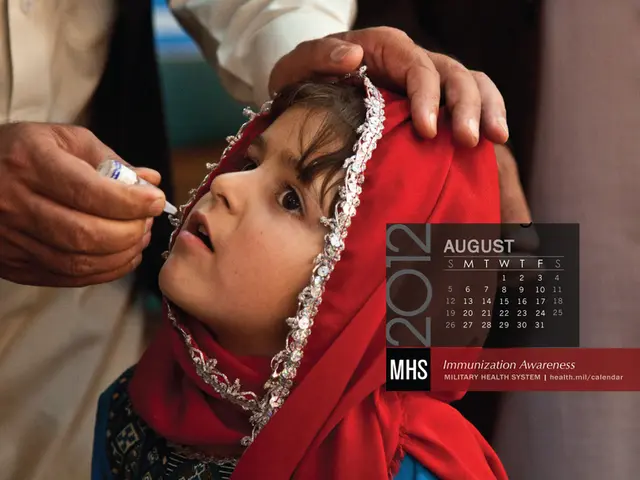Distinguishing age spots from skin cancer: Recognizing the signs and seeking proper diagnosis
Age Spots and Skin Cancer: Recognizing the Differences
As we age, our skin may develop spots that can resemble certain types of skin cancer or precancerous growths. Understanding the key differences between these conditions can help individuals identify when medical advice is necessary.
Age Spots and Skin Cancer: Overview
Age spots, also known as solar lentigines or liver spots, are harmless, flat, and dark patches on the skin that result from excessive melanin production due to sun exposure. In contrast, skin cancer poses a health risk and requires proper detection and treatment.
Age Spots
Age spots are typically flat and smooth, with yellow, brown, or gray tones and defined borders. They usually appear from middle age onwards and are more common in individuals with lighter skin. Age spots do not itch or present any discomfort, nor do they require treatment.
While benign, it is essential to distinguish age spots from other conditions, such as skin cancer or precancerous growths. It is advisable to speak with a healthcare provider if there are any concerns or new, changing skin spots.
Skin Cancer
Skin cancer, on the other hand, is a significant health concern. Like age spots, skin cancer is mostly caused by excessive sun exposure. When UV radiation or other factors damage skin cells, they can mutate, grow, and spread faster than healthy cells.
Skin cancer can have various symptoms, depending on factors such as the type of skin cancer, the location, and the individual's skin type. Warning signs of cancerous skin growths include asymmetry, changing size, color, or shape, multiple colors in one spot, and unhealed sores, among others.
There are several types of skin cancer, including basal cell carcinoma, squamous cell carcinoma, and melanoma. Skin cancer can be treated and managed effectively with timely detection and appropriate medical care.
Actinic Keratosis: A Precancerous Condition
Actinic keratosis, a precancerous growth, can resemble age spots but is caused by UV radiation damage. If left untreated, actinic keratosis could potentially become skin cancer. To prevent this, it is crucial to monitor any new or changing skin spots and consult a healthcare provider if symptoms of skin cancer or actinic keratosis emerge.
Symptoms Comparison
The symptoms of age spots and skin cancer offer valuable clues in their identification. Age spots are generally flat, smooth, and have distinct borders, while skin cancer lesions may exhibit different textures, colors, and sizes. It is important to develop an awareness of these differences to ensure proper skin health.
Diagnosis and Treatment
To diagnose age spots, doctors and dermatologists perform physical examinations. If needed, they may perform a skin biopsy to determine other conditions, such as skin cancer or actinic keratosis.
Treatment for age spots is optional, as they do not pose a health risk. Some individuals may choose to have them treated to reduce their appearance, from creams and lotions to laser treatments, cryosurgery, microdermabrasion, or chemical peeling.
Skin cancer treatment depends on factors such as the type, stage, and location of the cancer. Basal cell and squamous cell cancers can be surgically removed, and other treatments may include topical therapies, radiation therapy, chemotherapy, immunotherapy, or systemic medication.
In conclusion, recognizing the differences between age spots, skin cancer, and precancerous growths like actinic keratosis is vital for maintaining skin health. Seeking medical advice for any unusual changes to the skin can lead to early detection of skin cancer and improve health outcomes.
References:1. National Cancer Institute. (2021, March 17). Today's Skin Cancer Facts. https://www.cancer.gov/about-cancer/causes-prevention/risk/sun/actinic-keratosis-fact-sheet2. Mayo Clinic Staff. (2021, February 3). Age spots (liver spots). https://www.mayoclinic.org/diseases-conditions/age-spots/symptoms-causes/syc-203553583. Skin Cancer Foundation. (n.d.). Skin Cancer Types. https://www.skincancer.org/skin-cancer-information/skin-cancer-types4. American Cancer Society. (2021, March 1). Basal Cell Carcinoma. https://www.cancer.org/cancer/basal-cell-skin-cancer/about/key-statistics.html5. American Cancer Society. (2021, October 21). Squamous Cell Carcinoma. https://www.cancer.org/cancer/squamous-cell-skin-cancer/about/key-statistics.html
- In some seniors, melanoma or other skin cancer may resemble age spots, making it crucial for individuals to familiarize themselves with the differences to ensure early detection and proper medical attention.
- Age spots and melanoma have distinct characteristics: age spots are typically flat, smooth, and have defined borders, while melanoma lesions may show irregularity in shape, size, or color.
- Oncology and dermatology professionals work together to diagnose and treat various medical conditions, including skin cancers, utilizing science to identify the appropriate course of action for patients.
- Alongside age spots and skin cancer, conditions like actinic keratosis, a precancerous growth, warrant special attention, as they can potentially develop into other serious skin conditions without proper care and monitoring.
- Maintaining overall health and wellness, as well as focusing on proper skin care and skin-condition management, can help individuals minimize the impacts of skin-related medical issues and improve their quality of life.








